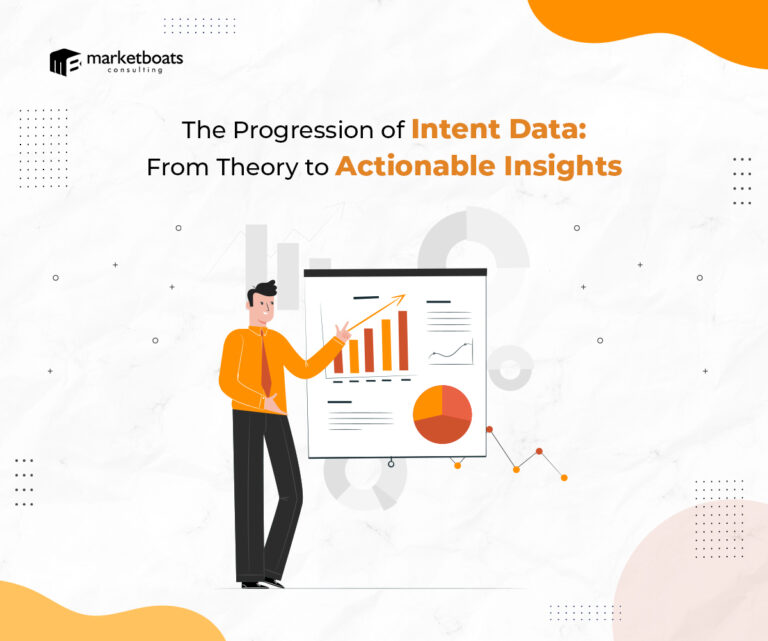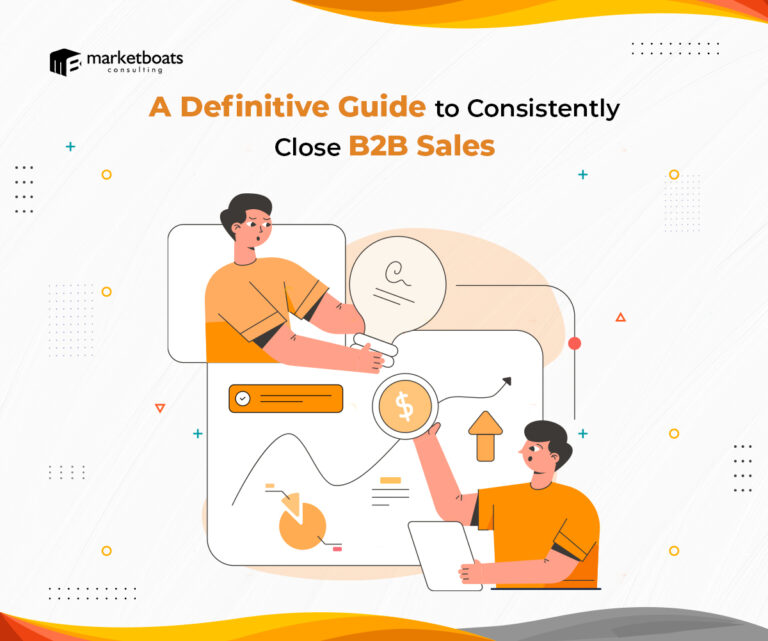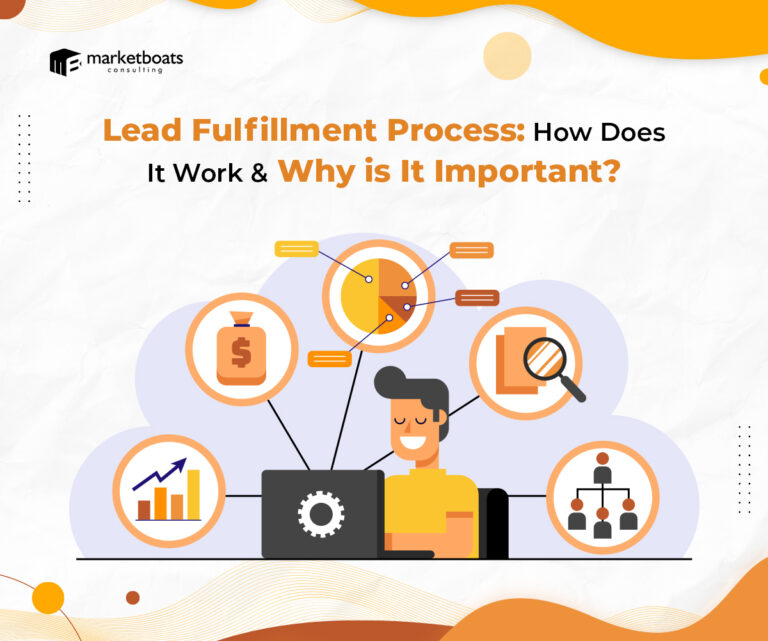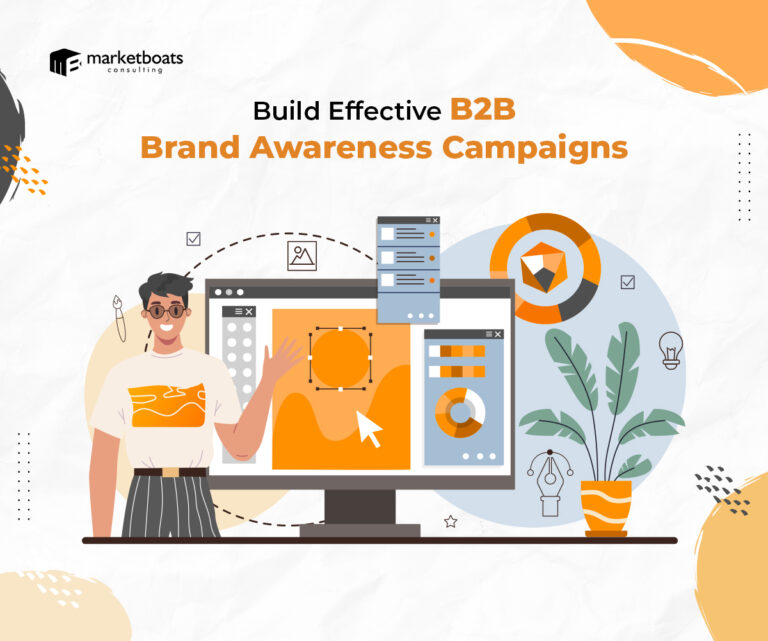Today, marketing is the cornerstone of modern business. Or, to put it simply, the sales success of your business heavily relies on how well you plan your marketing strategies.
Beth Comstock, Former CMO & Vice Chair, GE, once stated — “Marketing’s job is never done. It’s about perpetual motion. We must continue to innovate every day.”
In light of the never-ending cycle, marketing professionals now yearn for a more direct sales approach that would allow them to target their ideal prospect at the outset rather than creating and designing marketing campaigns and waiting for results.
Well, Account-based Marketing (ABM) is the answer. Let’s find out how it can up your marketing and sales game.
What is Account-Based Marketing (ABM)?
Marketing is about raising people’s awareness of the product (you want to sell) and ultimately persuading them to make a purchase. However, targeted accounts are both high- and low-value.
Account-based Marketing operates uniquely. It’s a focused, end-to-end revenue strategy that combines marketing, sales, and customer service efforts to target accounts that best fit the organization. You can identify high-value accounts and modify your buying group’s journey with relevant and hyper-personalized messaging.
Thus, ABM plays out in targeted, tailored and coordinated content for different accounts and individual buyers within the buying group that’s contextualized for them.
Why you should deploy ABM
Account-based marketing is an optimal strategy for businesses pursuing high-value customers and significant commercial agreements. It also offers a variety of benefits:
Marketing and sales collaboration
While collaboration is essential in business, ABM allows you to link your sales and marketing teams to work on operations in a coordinated manner and provide desired outcomes.
Account-specific marketing strategy
Each targeted account has unique wants and requirements. ABM lets you create a tailored marketing approach while considering your potential customers’ needs.
Quick decision-making
In today’s B2B businesses, multiple buyers are involved in the decision-making process, slowing the sales cycle. ABM makes it simpler and quicker by eliminating the need to reach out to all prospects and connects with only high-ticket clients for your business.
Strong Return on Investments (ROI)
ABM offers businesses more reliable ROI since it only targets high-value clients. 97% of B2B firms reported higher ROI when compared to traditional marketing activities.
Resource optimization
Targeting high-value accounts with ABM makes it considerably simpler to direct all your attention to a select few prospects. This reduces resource utilization and saves time.
Getting started with ABM
Account-based Marketing continues to grow in popularity among B2B companies owing to its guaranteed results. If you’re looking to transition to ABM, these steps will make it easier for you:
Define your ABM goals
Defining your goals is the first stage because without knowing what they are, you can’t achieve results.
Explore the following questions:
- Is the initial use of ABM to launch a product?
- Do you intend to target an existing or new customer group?
- Do you want to concentrate on attracting new clients, or do you want your current ones to spend more money?
- Do you want to be more profitable by lowering your cost of acquisition?
- Do you want to convert prospects into customers faster?
Choose the right technology
Once you’ve established objectives, it’s time to equip your ABM team with appropriate technologies for successful outcomes. You can turn to an intelligent sales tech stack that includes attribution, marketing automation, web personalization, conversational marketing, and more.
Identify target accounts
Identify who your target accounts will be and set up an Ideal Customer Profile (ICP) to refer to. Analyze your CRM and sales tools to dig out high-value clients instead of relying on subjective opinions and conversations.
You can use these buyer characteristics for identification – budget, location, industry, annual revenue, customer base size, organization size, and current tech stack.
Create a personalized customer journey
You can analyze buyer intent and map it to your CRM, segmenting the target accounts based on their needs and purchase intent. You can segment those with the highest propensity to buy into one group.
Customers more likely to purchase are also more likely to engage actively with you. Shape your content so that it deals with their pain points and shows them your product or service can solve those problems.
There you have it, a personalized customer journey that speeds up the sales cycle.
Craft messaging & select marketing channels
Once you have detailed insights into the target account, you can craft precise messaging that caters to their needs — delivering consistent and tailored communication across multiple channels.
Why multiple channels? Because reaching out to prospects on just one channel consistently can oversaturate the platform. But audiences are more interested when you deploy content through several channels in a unified, harmonious manner.
Channels you can use include:
- Email marketing
- Web personalization
- Social Media, particularly LinkedIn Sponsored Content
- Thought leadership content
- Conversational marketing
- SEO and SEM campaigns
- Display advertising and retargeting
- In-person meetings
Align Sales & Marketing
Cross-team collaboration ensures productive communication among teams and results in a consistent and pleasant experience throughout the buying journey. Once you’ve executed all the above steps, engage and align your marketing & sales team to start working on the ABM campaigns and drive sales success.
Ensuring ABM campaigns bring positive results
You need to measure your performance for all campaigns to run smoothly and achieve desired results. So, if a campaign isn’t performing well, you can take corrective action.
Optimize campaigns
ABM is a dynamic marketing activity. Since each account receives personalized communication, your activities across accounts may not be the same. As each account moves down the sales funnel, you target them with relevant content.
But the capacity to optimize is one of ABM’s most significant benefits. Unlike traditional marketers, ABM reps are more concerned with “how to boost sales.” And to do that, they constantly track and monitor their efforts through multiple metrics so that the outcomes are what they anticipated.
Key things to optimize are:
- Cost-per-impression & Cost-per-click
- Account Engagement
- Opportunity creation rate
- Pipeline acceleration
- Close/Win rate
Lock down KPIs
Metrics measured influence the actions your reps take for successful selling. While KPIs vary depending on the objectives and nature of your campaign, here are 7 KPIs you can start with:
- Engagement: Monitor if target accounts have increased engagement for your ongoing campaign.
- Opportunity Creation: How many new opportunities have your ABM efforts created.
- Conversion: See if targeted accounts are performing the actions you anticipated. Based on these metrics, you can optimize improvement.
- Sales Cycle: Track down your sales cycle in order to evaluate the impact of your ABM efforts.
- Customer Loyalty: Keep an eye on retention percentage based on the targeted accounts.
Metrics to ignore
While it’s important to know what KPIs you should track, specific metrics aren’t pertinent to ABM.
In conventional marketing, “leads” forecast revenue. However, in account-based marketing, leads have no such value. Instead, reps personalize messaging and target high-value accounts.
In ABM campaigns, it’s better to track “opportunities” instead of leads — because tracking opportunities will provide a better insight into revenue.
Wrapping it Up
Today, it’s no more about operating at the top or bottom of the sales funnel. Businesses have much deeper and more specialized capabilities to segment accounts. B2B teams are finding more enriching ways to drive revenue for their organizations and value for buyers, one of which is Account-based Marketing.
And given its results, ABM is set to become a leading sales tactic.
At Marketboats, we offer services like firmographic, technographic and intent data which will boost your ABM tech stack, ensuring sales success. 65% of B2B brands are already benefiting from ABM. Why are you holding out?
Allow us to handle this for you and help your business expand. Reach us at sales@marketboats.com or +1 914 407 3070 to discuss further.





